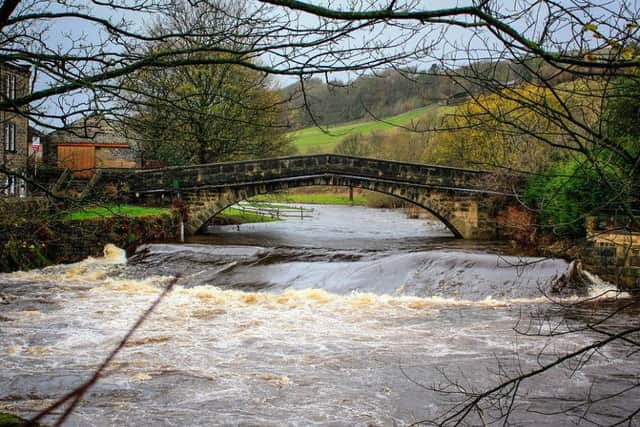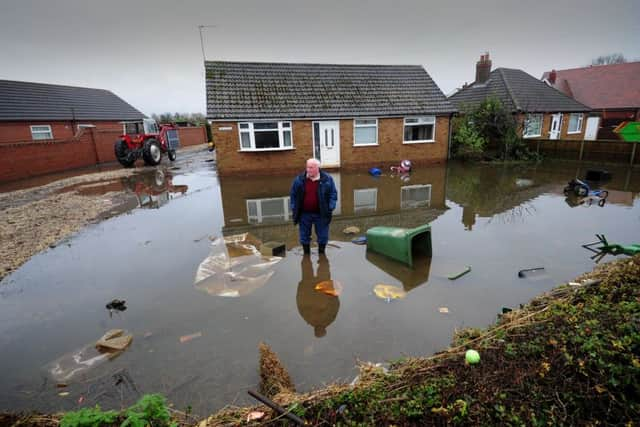Stop building on our flood plains and convert empty shops into new homes – GP Taylor


Precious homes were deluged by a vicious sea. Somehow, when I bought the house near the harbour, I never thought that flooding would be a problem. However, I can say that standing in the dark of night with black water all around and wondering how high it was going to get is a very frightening experience.
Advertisement
Hide AdAdvertisement
Hide AdThis is an experience that the people of Fishlake and other areas of Yorkshire have had to endure yet again. It is something that I believe is totally unnecessary and could have been avoided. Simply, houses should never be built on areas that were traditionally flood plains. Historically, these places were areas of land that acted as gigantic sponges to soak up the flooding from the rivers that ran through them.


Our ancestors had common sense. They would know which parts of the land would flood and not build there. You only have to look where they built the churches and the old pubs to see where it was safe to live.
Places such as the Isle of Axholme and even Fishlake give a clue in their names that there could be an issue with flooding. Why then do developers insist on building on such low lying, problematic areas? When they do build on flood plains, why don’t they set the houses higher from the ground?
Advertisement
Hide AdAdvertisement
Hide Ad

It seems ridiculous that planning permission should ever be given to builders to put up houses when anyone with an ounce of common sense would know that you are asking for trouble. Building firms sell the houses to unsuspecting customers and then a few years down the line, the floods come and people are homeless.
Flood plains are attractive to builders because they tend to be flat and are easy to build on. They are also usually near to roads and other useful infrastructure.
Every year, it is estimated that 10,000 houses are built in areas where inundation from water is likely. Insurance companies have estimated that claims from flooding may soon approach £1.5bn. This will lead to higher premiums for all of us, hence why it would be far more sensible for the Government to call a moratorium on such new builds and push housing firms towards the redevelopment of our high streets and brownfield sites.
Advertisement
Hide AdAdvertisement
Hide AdAs more and more shops close, it would bring new life to our town centres if they were once again used for housing. In 2018, Philip Hammond, the then Chancellor, promised £675m to help the struggling high streets. It was also promised that planning permission to convert shops to houses would be made easier. None of this seems to have happened and a trip through any town centre will see the usual number of closed shops and boarded up windows.


Places that were once thriving communities are now ghost towns. The town of Loftus has a main street that is heartbreaking to drive through and is in urgent need of regeneration. This story is repeated across the county.
There are no reasons why empty shops cannot be turned into houses and flats in areas that are historically safe from flooding, and this should take priority over new builds on flood plains and greenfield sites. As the town centres die, new life should not be confined to the suburbs.
It is vital that dying town centres with their brownfield development sites be given a new lease of life and restored to the way they were when built in the last century. There is no need to pull them down. One only has to see the disaster that is now the centre of Scarborough to prove that. The soul was ripped out of the town and beautiful old buildings replaced by depressing concrete monsters. In Whitby, housing goes hand in hand with shops and offices. Church Street and Sandside are a fine example of a mixed environment.
Advertisement
Hide AdAdvertisement
Hide AdWith a growing housing shortage, it is imperative that we look to bring life and lives back to the centres of our towns. Yet, at a time when major weather events are on the increase and flooding ever more likely, house building on flood plains has to stop. Then and only then will building firms think about where they are going to safely put our houses. Perhaps, they will turn to the ailing town centres and not only renovate buildings but rejuvenate communities.
GP Taylor is an author and broadcaster. He lives in Whitby.